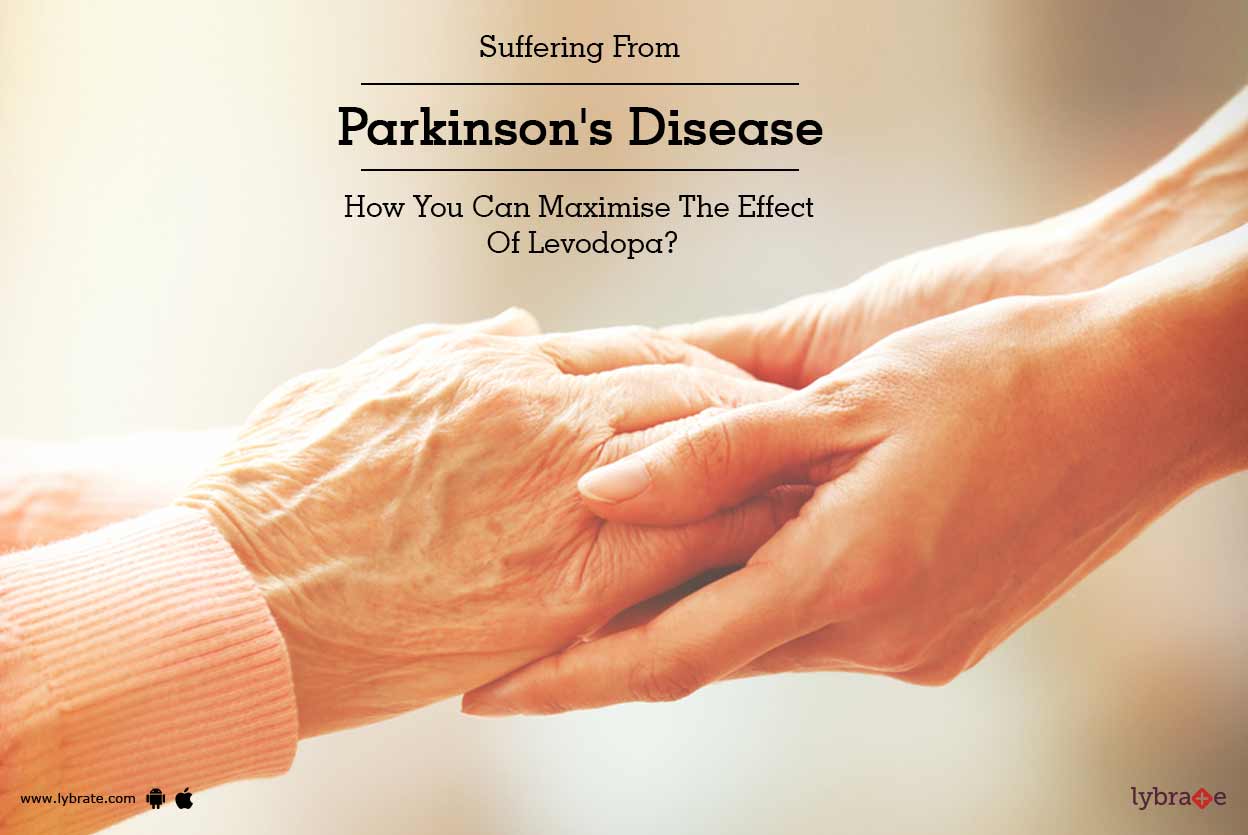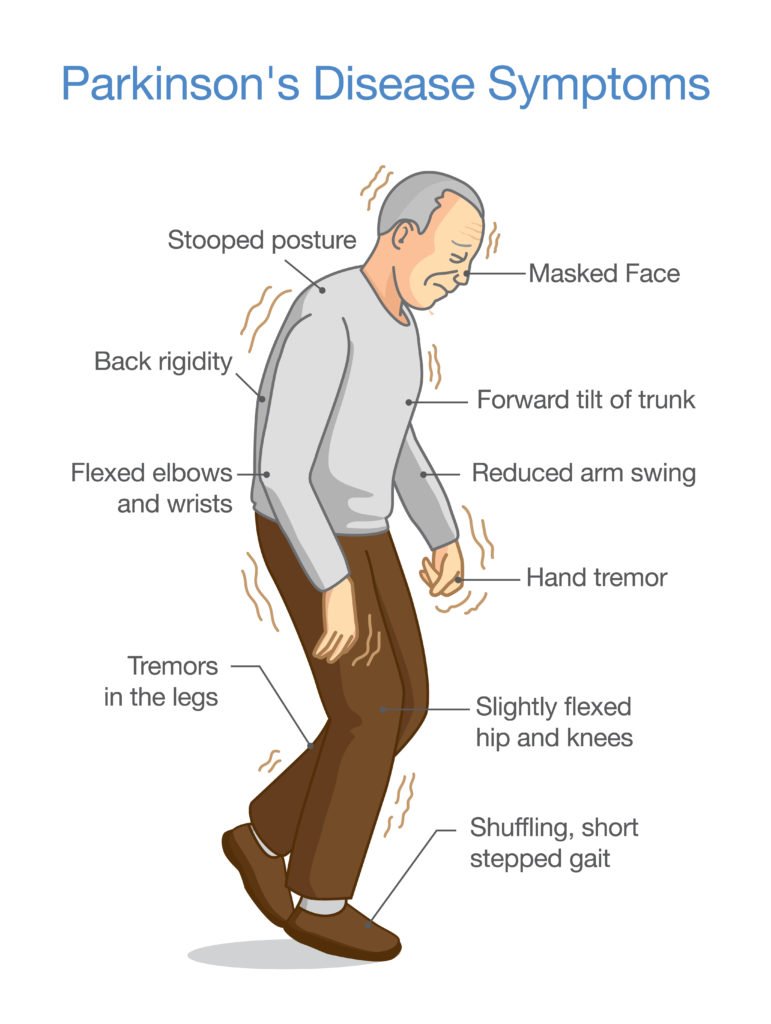Other Dopamine Replacement Drugs
Although levodopa is the gold standard and generally accepted to be the most effective treatment for Parkinsons, there are a few other options. Since we know that long-term levodopa use can lead to the movement issues of dyskinesia, you might want to try another medication first37;. Some dopamine replacement drugs can also help levodopa work better.
Dopamine Agonists
A dopamine agonist drug directly stimulates your dopamine receptors in your brain, similar to how real dopamine would. In order to carry out its functions in the body, dopamine must first attach to receptor proteins in the brain, which help signal other cells on how to behave. While dopamine agonists dont turn into dopamine the way levodopa does, they stimulate dopamine receptors without binding to them and ultimately have similar effects in the brain. You can use an agonist instead of levodopa , or in combination with levodopa. You might also use an agonist if avoiding dyskinesia is a priority for you.
Brand name dopamine agonists include Mirapex , Requip , Neupro , and Apokyn .
Its important to note that agonists can cause serious side effects.6 One side effect is impulse control disorders, such as problems with gambling, obsession with sex or shopping. Other possible side effects include hallucinations and excessive daytime sleepiness. Quitting an agonist suddenly can also bring on withdrawal symptoms.
MAO-B Inhibitors
COM-T Inhibitors
Other Therapies To Consider
Trained therapists across a number of disciplines can work with you to develop exercises and lifestyle strategies to improve specific challenges youre having as a result of Parkinsons disease. You dont have to wait until youre struggling to seek out a therapist its important to intervene early. These lifestyle changes will hopefully benefit you now and down the road.37
Physical Therapy
A physical therapist can help you do exercises to improve your balance, gait, coordination and dealing with symptoms like freezing. For example, a physical therapist can teach you to cope with freezing episodes by using a laser which projects a line on the ground, stepping over such lines on the ground to cue your brain to start moving again, and walking assisted by rhythmic musical cues.13
One specific type of physical therapy for Parkinsons is LSVT BIG, which utilizes overexaggerated movements to retrain your bodys smaller, slower movements caused by Parkinsons. For example, buttoning a button with more purposeful, forceful movements, like youre angry at the buttons, can help you button faster.22 Some research found LSVT BIG to be more effective at improving your movement abilities than general exercise.24
Occupational Therapy
Occupational therapists teach you how to do everyday activities that have become difficult for you. For example, how to do daily tasks when you have a tremor and how to keep track of when your food has gone bad after you lose your sense of smell.13
Speech And Occupational Therapy
Parkinsons disease can lead to slurred speech and difficulty swallowing. A speech and language therapist can provide muscle training techniques that may help overcome some of these problems.
An occupational therapist can help identify everyday tasks that can be challenging and work with the person to find practical solutions.
This may include new strategies for dressing, preparing meals, performing household chores, and shopping. Adaptations to the home environment can also make daily living easier.
For people with Parkinsons disease, deep brain stimulation may help manage:
- tremor
- an electrode inside the part of the brain that controls movement
- a pacemaker-like device, or neurostimulator, under the skin in the upper chest
- a wire under the skin connecting the neurostimulator to the electrode
The neurostimulator sends electrical impulses along the wire and into the brain via the electrode. These impulses can prevent symptoms by interfering with the electrical signals that cause them.
There is a small risk of brain hemorrhage, infection, and headaches. Some people may see no improvement, or their symptoms may worsen. There may also be discomfort during stimulation.
Nevertheless, the AAN considers this treatment safe and effective for specific people and say any adverse effects are usually mild and reversible. Anyone considering this treatment should discuss the pros and cons with a healthcare professional.
Also Check: How To Walk With Parkinson’s Disease
Add Medication For A Winning Combo
Diet and exercise are important for managing PD, but dont forget about medications. Take them regularly and exactly as your doctor prescribes.
If you tend to forget your medication, set an alarm to remind you. You can also use a pillbox thats labeled with days and times of day. Take your meds on a set schedule, dont skip doses and dont double dose, says Dr. Gostkowski. When youre diligent about taking your medications and following a healthy lifestyle, youll feel your best.
Eat Plenty Of Protein But Not With Levodopa Medications

If youre taking a levodopa medication, your doctor may tell you to avoid protein when taking your meds. Both animal and plant protein can interfere with the absorption of levodopa medications.
But you should still eat plenty of protein. Just be strategic with the timing. Dont take levodopa medications with meals, Dr. Gostkowski says. Its best to take it on an empty stomach either 30 minutes before your meal or an hour after eating.
If you get nauseous from the medication, eat a small amount of starchy food with it, such as crackers. Make sure whatever you eat with your medicine doesnt have protein. Its a misunderstanding that people with Parkinsons should avoid protein, Dr. Gostkowski says. You definitely need protein in your diet. Just dont eat it when youre taking your levodopa medication.
Also Check: Will Parkinson’s Show Up On An Mri
Who Gets Parkinsons Disease
Parkinsonâs disease, documented in 1817 by physician James Parkinson, is the second most common neurodegenerative disease after Alzheimerâs disease. Estimates regarding the number of people in the United States with Parkinsonâs range from 500,000 to 1,500,000, with 50,000 to 60,000 new cases reported annually. No objective test for Parkinsonâs disease exists, so the misdiagnosis rate can be high, especially when a professional who doesnât regularly work with the disease makes the diagnosis.
Deep Brain Stimulation For Parkinson’s: Am I A Candidate
Deep brain stimulation is not a cure, but it can relieve your symptoms from Parkinson’s disease when medications are not an option. Only you and your doctor can decide if this surgical procedure is right for you. You may be a candidate for deep brain stimulation if:
- You have idiopathic Parkinson’s disease. Patients with atypical parkinsonism are not candidates.
- You have good motor function and independence during your best “on” state when taking the drug Sinemet.
You May Like: Is Parkinson’s Disease Terminal
Surgery For Parkinsons Disease
Based on the severity of the condition and the medical profile, the doctor may recommend surgery as one treatment option for Parkinson’s disease.
There are several types of surgery that may be performed that can help patients with Parkinson’s disease. Most of the treatments are aimed at helping the tremor or rigidity that comes with the disease. In some patients, surgery may decrease the amount of medication that is needed to control the symptoms.
There are three types of surgeries that may be performed for Parkinson’s disease, including the following:
It is important to remember that surgery may help with symptoms of Parkinson’s disease, but does not cure the disease or stop the progression of the disease.
How Is Parkinsons Disease Treated
There is no cure for Parkinsons disease. However, medications and other treatments can help relieve some of your symptoms. Exercise can help your Parkinsons symptoms significantly. In addition, physical therapy, occupational therapy and speech-language therapy can help with walking and balance problems, eating and swallowing challenges and speech problems. Surgery is an option for some patients.
Also Check: Who Diagnoses Parkinson’s Disease
Alternative Treatments For Parkinson’s Disease
Alternative therapy may also be used to treat Parkinson’s disease. The most touted in recent years has been the effect of Vitamin E on reversing the progression of the disease; although, this effect is still being debated by the scientific community.
Relaxation and guided imagery have also been suggested to help with stress, depression, and anxiety. Medical studies have shown that relaxation and guided imagery may help slow the progression of symptoms as well as quicken healing time after surgeries or injuries.
Home Remedyfor Parkinsons #8 Green Tea:
Green tea contains theanine, a nutrient that increasesdopamine levels in the brain, and polyphenol antioxidants that help fight free radicals. Three separate studies all found that regularlydrinking tea can either delay or prevent the development of PD. A retrospectivestudy also found that drinking three or more cups of tea a day can delay the onsetof motor symptoms. And a 2007 study found that green tea polyphenols protect braincells and dopamine neurons, and this positive effect increases with the moregreen tea consumed. 10
The minimum amount that should be drank every day is 3cups, with 6-9 cups a day being the ideal.Matcha green tea is the most potent and beneficial so try and purchase this ifyou can. A strong cup of coffee first thing in the morning is thought tobe effective for reducing the symptoms of Parkinsons disease as well, however,we recommend you stick with green tea, or even a strong cup of black tea ifyou can for the theanine and EGCGs.;
Read Also: How To Test For Parkinson’s Disease
Discuss The Latest Research In The Parkinsons News Today Forums
2. Carbidopa-levodopa infusion:;In 2015, the FDA approved;Duopa, which is a combination of carbidopa and levodopa;in a gel form which is administered via a feeding tube into the small intestine.
Duopa is generally given to patients with advanced Parkinsons disease whose response to carbidopa-levodopa is varied. The drug is infused continuously so the level of the drugs remains constant.
The risks associated with Duopa;are infections at the site of the feeding tube and the tube falling out.
3. Dopamine agonists:;Dopamine agonist mimic the effects of dopamine in the brain. They are generally not as effective as levodopa but the effects last longer and they can be used in conjunction with levodopa to counter any fluctuation in efficiency.
These medications can be administered through;a patch, oral;medications or as an injection. The side effects are also nausea and lightheadedness, but may also cause drowsiness, hallucinations and compulsive behaviors such as gambling, overeating, and hypersexuality which will need to be addressed by a doctor.
MORE:;Find out about the four possible causes of Parkinsons disease here.
4. MAO-B inhinitors:;Medications such as selegiline and rasagiline help to prevent dopamine breaking down in the brain by releasing monoamine oxidase B enzymes.
5. Catechol-O-methyltransferase inhibitors:;These types of medications help to prolong the effects of levodopa by blocking brain enzymes that deplete dopamine.
What Causes Parkinson’s Disease

Parkinson’s disease occurs when nerve cells, or neurons, in an area of the brain that controls movement become impaired and/or die. Normally, these neurons produce an important brain chemical known as dopamine. When the neurons die or become impaired, they produce less dopamine, which causes the movement problems of Parkinson’s. Scientists still do not know what causes cells that produce dopamine to die.
People with Parkinson’s also lose the nerve endings that produce norepinephrine, the main chemical messenger of the sympathetic nervous system, which controls many functions of the body, such as heart rate and blood pressure. The loss of norepinephrine might help explain some of the non-movement features of Parkinson’s, such as fatigue, irregular blood pressure, decreased movement of food through the digestive tract, and sudden drop in blood pressure when a person stands up from a sitting or lying-down position.
Many brain cells of people with Parkinson’s contain Lewy bodies, unusual clumps of the protein alpha-synuclein. Scientists are trying to better understand the normal and abnormal functions of alpha-synuclein and its relationship to genetic mutations that impact Parkinsons disease and Lewy body dementia.
Don’t Miss: What To Know About Parkinson’s Disease
Other Drugs Used For Parkinsons Disease
While most Parkinsons medications are based around increasing the amount of dopamine available to your brain, there are a few other medications that work differently. Parkinsons disease can cause a unique assortment of symptoms, and for this reason, the following medications are used on a case-by-case basis. Depending on your symptoms, your doctor might feel like there is a place for these drugs in your treatment.
Anticholinergics;
Anticholinergic drugs are used to treat conditions that involve contraction and relaxation of your muscles. They work by inhibiting acetylcholine, a neurotransmitter in your central nervous system that helps regulate movement.Before levodopa was introduced, anticholinergics were the primary treatment for Parkinsons disease, but today are used only sparingly, primarily for younger people. It most effectively treats tremor and dystonia abnormal, involuntary muscle contractions.19;Anticholinergics are typically avoided in older patients because they can worsen cognition. Brand names include Cogentin and Artane . Possible side effects include nausea, dry mouth, memory problems and vision changes.
Pimavanserin
Rivastigmine
Droxidopa
How Do You Know You Have Parkinsons Disease
There is no definitive way to diagnose Parkinsons disease. Your doctor will ask questions about the onset of your symptoms and assess your movement to make referrals to specialists who can make a formal diagnosis.;
You can expect to see a neurologist who can complete a neurologic examination. This may include brain imaging, an MRI, or a PET scan to see activity in the area of the brain typically affected by Parkinsons disease.;
Your doctor may also refer you to a movement disorder specialist. Seeing subspecialists is very important to avoid being misdiagnosed. Highly trained specialists can provide their expertise in specific areas of medicine where a precise diagnosis isnt possible from blood work or another definitive test.
Read Also: What Are Early Warning Signs Of Parkinson’s Disease
Should You Wait To Start Taking Levodopa
There is a common misconception levodopa is dangerous and you should wait to start taking it as long as possible, it only works for a few years, or it will make your Parkinsons disease progress faster. However, these concerns are a myth if it is managed appropriately.35
Levodopa has been used since the 1960s and there is no evidence that it is harmful to the brain. In fact, levodopa may have a slight protective effect.25 Medical professionals are more focused on helping your brain stay as normal as possible for as long as possible, rather than under-treating for the theoretical benefit of taking fewer medications. In addition, levodopa can make you more mobile so you can exercise more, which is another important treatment strategy.
Parkinsons Disease Treatment Options
Parkinsons is incurable, but the symptoms can be managed as the disease progresses. Initially, your doctor may recommend lifestyle changes, such as ongoing aerobic exercise, healthy diet, and advice for avoiding falls.
Medication
-
Carbidopa-levodopa : Sometimes simply called Levodopa, is the most effective Parkinsons disease medication and has been since its breakthrough in the late 1960s. It is an effective first-line treatment for Parkinsons and comes in many formulations, including slow- and extended-release pills, and infusions. It works by introducing a natural chemical to the body which converts into dopamine in the brain. This helps reduce symptoms of stiffness and tremors. The medication does not slow the progression of the disease.
-
Catechol O-methyltransferase inhibitors: These pills can boost the effectiveness of carbidopa-levodopa. It helps block the brains dopamine breakdown to help reduce some of the tremors and motor symptoms of Parkinsons.
-
Dopamine agonists: This medication mimics the effect of dopamine in the brain and may be used with carbidopa-levodopa. It can be prescribed in the early stages of Parkinsons, and it can lengthen the effectiveness of carbidopa-levodopa.
Clinical Trials
Don’t Miss: What Is Focused Ultrasound For Parkinson’s
Stretching To Loosen Stiff Muscles Of Parkinson’s
The following stretching and flexibility exercises can help to relieve stiff muscles, improve flexibility, and make everyday tasks easier:
On And Off Periods With Parkinsons
As your Parkinsons progresses over the years, you will probably start to notice even though youre still taking your carbidopa-levodopa regularly, you experience periods where its working effectively and then periods where the medication seems to not be working . When youre on, you should feel like you can move more normally, with less tremor, stiffness and/or slowness. And then when youre off, all those stiff, rigid, slow movements and your tremor return, almost as if your medications have decided to stop working. Frustratingly, it can be hard to predict exactly how long your on and off periods will last.
Off periods are a result of the disease progressing and becoming harder to control through medication. When you first start medication, its common to go through a honeymoon period of several years, where its working well and you can hardly tell you have Parkinsons.23 Then, as the condition progresses, your body produces less dopamine, making you more dependent on your dopamine-replacement medication. Over time this leads to more and more instances where the medication is supposed to kick in, or supposed to last for several hours, but is less effective.31
Related: This story explains what it feels like to be on.
Also Check: How Parkinson’s Affects The Nervous System
Using An Adaptive Keyboard
There are adaptive keyboards and specific software programs that can help to decrease typing mistakes and make the process of typing on a computer easier. There are also speech-to-text options which allow you to dictate what you want to write and eliminate the need for typing altogether. An OT consultation can help set you up with these options.
One trick that I recommend frequently which helps people use their computer is changing the cursor setting so that it tracks more slowly across the screen when you use your mouse. Slowing down the cursor can help make it easier to see and control.; In addition, you can change the sensitivity of your mouse to make it easier to control.

